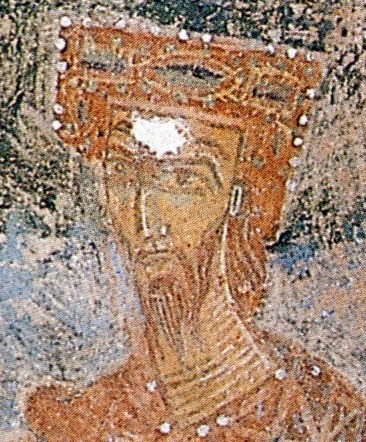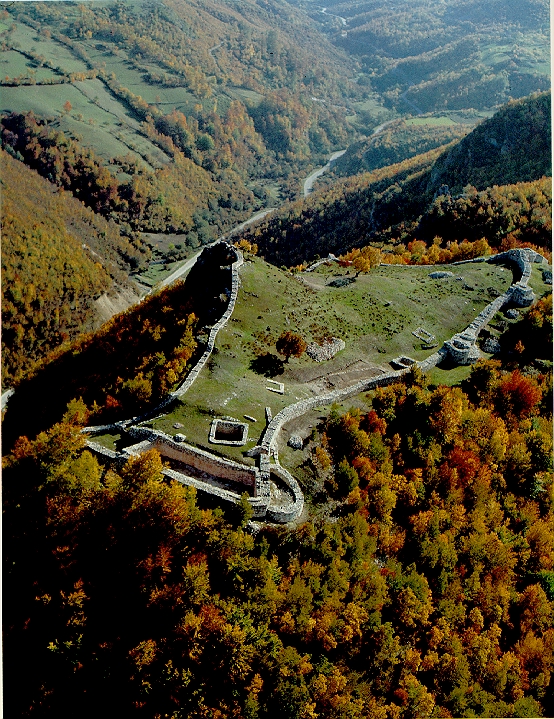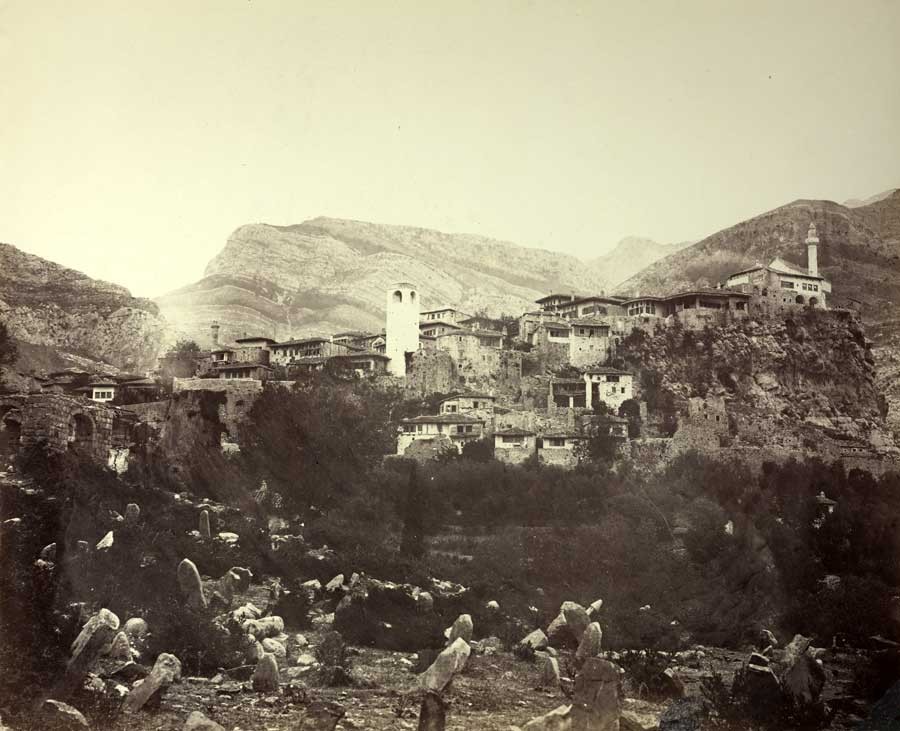|
Duklja
Duklja ( sr-Cyrl, Дукља; ; ) was a medieval South Slavs, South Slavic state which roughly encompassed the territories of modern-day southeastern Montenegro, from the Bay of Kotor in the west to the Bojana river in the east, and to the sources of the Zeta (river), Zeta and Morača rivers in the north. First mentioned in 10th– and 11th-century Byzantine chronicles, it was a vassal of the First Bulgarian Empire, Bulgarian Empire between 997 and 1018, and then of the Byzantine Empire until it became independent in 1040 under Stefan Vojislav ( 1034–43) who rose up and managed to take over territories of the earlier Principality of Serbia (early medieval), Serbian Principality, founding the Vojislavljević dynasty. Between 1043 and 1080, under Mihailo Vojislavljević ( 1050–81), and his son, Constantine Bodin ( 1081–1101), Duklja saw its apogee. Mihailo was given the nominal title ''King of Slavs'' by the Pope after having left the Byzantine camp and supported an Uprising ... [...More Info...] [...Related Items...] OR: [Wikipedia] [Google] [Baidu] |
Vojislavljević Dynasty
The House of Vojislavljević ( sr-Cyrl, Војислављевић, pl. Vojislavljevići / Војислављевићи) was a Serbian medieval dynasty, named after ''archon'' Stefan Vojislav, who wrested the polities of Duklja, Travunia, Zahumlje, inner Serbia and Bosnia from the Byzantines in the mid-11th century. His successors, kings Mihailo I Vojislavljević (d. 1081) and Constantine Bodin (d. 1101) expanded and consolidated the state. During the 12th century, the main line of the Vojislavljević family was ousted by their cadet branch, the Vukanović. (which became the Nemanjić dynasty), in the late 12th century. History Background Stefan Vojislav Stefan Vojislav, the progenitor of the dynasty, was a nobleman in Byzantine service who had the titles of ''archon'', and '' toparch'' of the Dalmatian ''kastra'' of Zeta and Ston.Kekaumenos, ed Litavrin, 170-2Paul Magdalino, ''Byzantium in the year 1000''p. 124/ref> In 1034 he led an unsuccessful revolt that resul ... [...More Info...] [...Related Items...] OR: [Wikipedia] [Google] [Baidu] |
Grand Principality Of Serbia
The Grand Principality of Serbia ( sr-Cyrl-Latn, Великожупанска Србија, Velikožupanska Srbija, separator=" / "), also known by the anachronistic exonym Raška (region), Rascia ( sr-Cyrl-Latn, Рашка, Raška, separator=" / ", link=no), was a medieval Serbs, Serbian state that existed from the second half of the 11th century up until 1217, when it was transformed into the Kingdom of Serbia (1217–1346), Kingdom of Serbia. After the Grand Principality of Serbia emerged, it gradually expanded during the 12th century, encompassing various neighbouring regions, including territories of Raška (region), Raška ( sr-Cyrl, Рашка; ), modern Montenegro, Herzegovina, and southern Dalmatia. It was founded by Grand Prince Vukan, Grand Prince of Serbia, Vukan, who initially served as the regional governor of the principality ( 1082), appointed by King Constantine Bodin. During the Byzantine–Serbian wars ( 1090), Vukan gained prominence and became a self-governing ... [...More Info...] [...Related Items...] OR: [Wikipedia] [Google] [Baidu] |
Peter Of Diokleia
10th-century Serbian nobility 11th-century Serbian nobility Medieval history of Montenegro Monarchs of Duklja Peter of Diokleia, Petrislav, or potentially Petrislav Hvalimirović was an ''archon'' of Duklja in the late 10th century. Biography The history of Duklja until the 10th century is little known. A list of mythological rulers of this time exists in the historically dubious Chronicle of the Priest of Duklja, compiled in the 13th century or even the 16th and 17th centuries. In this chronicle, the father of Prince Jovan Vladimir (ruled c. 1000 – 1016) is named '' Petrislav'', possibly meaning that Peter and Petrislav are the same.Živković 2006, "Владимир". It's mentioned in the historically dubious Chronicle of the Priest of Duklja that Petrislav is a descendant of the Trebinje Prince Hvalimir, Petar's potential predecessor who came from the Travunian dynasty and was given Duklja to rule as part of Hvalimir's domain. Seal The only information on him is ... [...More Info...] [...Related Items...] OR: [Wikipedia] [Google] [Baidu] |
Stefan Vojislav
Stefan Vojislav ( sr-Cyrl, Стефан Војислав, ; 1034–d. 1043) was the Prince of Duklja from 1018 to 1043. Beginning in the year 1018, he served as a Byzantine governor, until 1034 when he led an unsuccessful revolt that landed him in a prison at Constantinople. He managed to escape and returned home, this time successfully gaining the independence of his statelet and expanding his rule over southern Dalmatia and its hinterland. He is the eponymous founder of the Vojislavljević dynasty. Origin and early life The contemporary Byzantine writers call him either a Serb or a Dukljan (''Βοϊσθλάβος ὁ Διοκλητιανός)'', but do not mention his genealogy, while the '' Chronicle of the Priest of Duklja'', a posterior, more dubious source, calls him a cousin to previous ruler Jovan Vladimir (r. 990–1016).Živković 2006, "Стефан Војислав". Having reached its pinnacle during the long reign of emperor Basil II, the Byzantine Empire entered ... [...More Info...] [...Related Items...] OR: [Wikipedia] [Google] [Baidu] |
Constantine Bodin
Constantine Bodin ( Bulgarian and , ''Konstantin Bodin''; 1072–1101) was a medieval king and the ruler of Duklja, the most powerful Serbian principality of the time, from 1081 to 1101, succeeding his father, Mihailo Vojislavljević ( 1046–1081). Born in peaceful times, when the South Slavs were subjects of the Byzantine Empire, his father was in 1072 approached by Bulgarian nobility, who sought aid in their revolt against the Byzantines. Mihailo sent them Bodin, who was crowned Bulgarian tsar under the name Peter (, ''Petŭr''); he is therefore sometimes enumerated as Peter III (Петър ІІІ) as ''tsar''. Bodin joined the short-lived revolt, being captured the following year after initial success. He was freed in 1078, and upon the death of his father in 1081 he succeeded to the throne of Dioclea. Having renewed his acknowledgement of Byzantine overlordship, he soon sided with their enemies, the Normans, which resulted in a Byzantine invasion and his capture. ... [...More Info...] [...Related Items...] OR: [Wikipedia] [Google] [Baidu] |
Mihailo I Of Duklja
Mihailo Vojislavljević ( sr-cyr, Михаило Војислављевић) was a medieval Serbian king and the ruler of Duklja, Dioclea (Duklja), from 1046 to 1081, initially as a Byzantine vassal holding the title of ''protospatharios'', then after 1077 as nominally serving Pope Gregory VII, styled as "King of the Slavs". He had alienated himself from the Byzantines when he supported a Bulgarian Uprising of Georgi Voyteh, after which he then sought to gain support in the West. In 1077 he received royal insignia by Gregory VII in the aftermath of the East-West Schism, Church schism of 1054. Life Early rule With the death of Stefan Vojislav, his dominion was divided among his five sons (according to the ''Chronicle of the Priest of Duklja''). received Travunia (Trebinje) ruled briefly until he was killed by local nobles, who set up Domanek in his place. Mihailo expelled him and Saganek chosen to rule, but Domanek returned and drove him out. Mihailo offered the office to Radoslav ... [...More Info...] [...Related Items...] OR: [Wikipedia] [Google] [Baidu] |
Mihailo Vojislavljević
Mihailo Vojislavljević ( sr-cyr, Михаило Војислављевић) was a medieval Serbian king and the ruler of Dioclea (Duklja), from 1046 to 1081, initially as a Byzantine vassal holding the title of '' protospatharios'', then after 1077 as nominally serving Pope Gregory VII, styled as "King of the Slavs". He had alienated himself from the Byzantines when he supported a Bulgarian Uprising of Georgi Voyteh, after which he then sought to gain support in the West. In 1077 he received royal insignia by Gregory VII in the aftermath of the Church schism of 1054. Life Early rule With the death of Stefan Vojislav, his dominion was divided among his five sons (according to the '' Chronicle of the Priest of Duklja''). received Travunia (Trebinje) ruled briefly until he was killed by local nobles, who set up Domanek in his place. Mihailo expelled him and Saganek chosen to rule, but Domanek returned and drove him out. Mihailo offered the office to Radoslav, who declined, af ... [...More Info...] [...Related Items...] OR: [Wikipedia] [Google] [Baidu] |
Mihailo III Of Duklja
Mihailo III ( sr-cyr, Михаило) was Prince of Duklja, from c. 1180, or before, up to 1186 or 1189. He was descended from the Vojislavljević dynasty, and also cousin to Grand Prince Stefan Nemanja of Serbia. The Principality of Duklja was tributary to the Byzantine Empire until 1180, when Emperor Manuel I died and Empire plunged into turmoil. By 1186, Byzantine possessions in Upper Dalmatia were overrun by Stefan Nemanja, who also imposed his rule over Duklja. The domain of Prince Mihailo was reduced to the coastal regions around Bar, while the rule over Duklja was given to Vukan, eldest son of Stefan Nemanja. Prince Mihailo was patron of the Archbishopric of Bar, and in 1189 his wife, princess Desislava, was accompanied to Dubrovnik by archbishop Gregory of Bar. See also * Duklja * Vojislavljević dynasty * Stefan Nemanja * Nemanjić dynasty * Grand Principality of Serbia The Grand Principality of Serbia ( sr-Cyrl-Latn, Великожупанска Србија, ... [...More Info...] [...Related Items...] OR: [Wikipedia] [Google] [Baidu] |
Montenegro
, image_flag = Flag of Montenegro.svg , image_coat = Coat of arms of Montenegro.svg , coa_size = 80 , national_motto = , national_anthem = () , image_map = Europe-Montenegro.svg , map_caption = , image_map2 = , capital = Podgorica , coordinates = , largest_city = capital , official_languages = Montenegrin language, Montenegrin , languages2_type = Languages in official use , languages2 = , ethnic_groups = , ethnic_groups_ref = , ethnic_groups_year = 2023 census , religion = , religion_ref = , religion_year = 2023 census , demonym = Montenegrins, Montenegrin , government_type = Unitary parliamentary republic , leader_title1 = President of Montenegro, President , leader_name1 = Jakov Milatović , leader_title2 ... [...More Info...] [...Related Items...] OR: [Wikipedia] [Google] [Baidu] |
Principality Of Serbia (early Medieval)
Principality of Serbia (Modern sr-Cyrl-Latn, Кнежевина Србија, Kneževina Srbija, separator=" / "; also known as Principality of Serbs, (Modern sr-Cyrl-Latn, Кнежевина Срба, Kneževina Srba, separator=" / "; ; ) was one of the early medieval states of the Serbs, located in the western regions of Southeastern Europe. It existed from the 8th century up to c. 969–971 and was ruled by the Vlastimirović dynasty. Its first ruler known by name was Višeslav who started ruling around 780. While by that time, starting from the year 680–681, the Bulgarian state had taken the lands to the east. Vlastimir resisted and defeated the Bulgarian army in a three-year-war (839–842), and the two powers lived in peace for some decades. Vlastimir's three sons succeeded in ruling Serbia together, although not for long; Serbia became a key part in the power struggle between the Byzantines and Bulgarians, predominantly allied with the Byzantines, which also resulte ... [...More Info...] [...Related Items...] OR: [Wikipedia] [Google] [Baidu] |
Bar, Montenegro
Bar (Montenegrin language, Montenegrin: Bar, Бар, , ) is a town and seaport in Coastal Montenegro, Coastal region of Montenegro. It is the capital of the Bar Municipality and a center for tourism. According to the 2023 census, the city proper had 15,868 inhabitants, while the total population of Bar Municipality was 46,171. Name Bar is supposed to be a shortened Slavic variant of ''Antivari''. The name is thought to be derived from the Latin ''Antibarum'' or ''Antibari'', which later in Greek was transformed into ''Antivárion / Antivari'' due to its pronunciation. "Antibari", meaning "opposite Bari", is a name taken because of it is location across the Adriatic Sea from Bari in Italy. Variations are in Italian language, Italian, ''Antivari / Antibari''; in Albanian language, Albanian, ''Tivari'' or ''Tivar''; in Turkish language, Turkish, ''Bar''; in Greek language, Greek, Θηβάριον, ''Thivárion'', Αντιβάριον, ''Antivárion''; in Latin, ''Antibarium''. His ... [...More Info...] [...Related Items...] OR: [Wikipedia] [Google] [Baidu] |
Raška (region)
Raška ( sr-Cyrl, Рашка; ) is a geographical and historical region of Serbia. Initially a small borderline district between early medieval Serbia and Bulgaria (city/area of Stari Ras, Ras), and the Byzantine Empire, it became the center of the Grand Principality of Serbia and of the Kingdom of Serbia (medieval), Serbian Kingdom in the mid-12th century. From that period on, the name of Raška became associated with the state of Serbia, eventually covering the south-western parts of modern Serbia, and historically also including north-eastern parts of modern Montenegro, and some of the most eastern parts of modern Bosnia and Herzegovina, and its southern part covering the modern region of Sandžak. Name The name is derived from the name of the region's most important fort of Stari Ras, Ras, which first appears in the 6th century sources as ''Arsa'', recorded under that name in the work ''De aedificiis'' of Byzantine historian Procopius. By the 10th century, the variant ''Ra ... [...More Info...] [...Related Items...] OR: [Wikipedia] [Google] [Baidu] |





